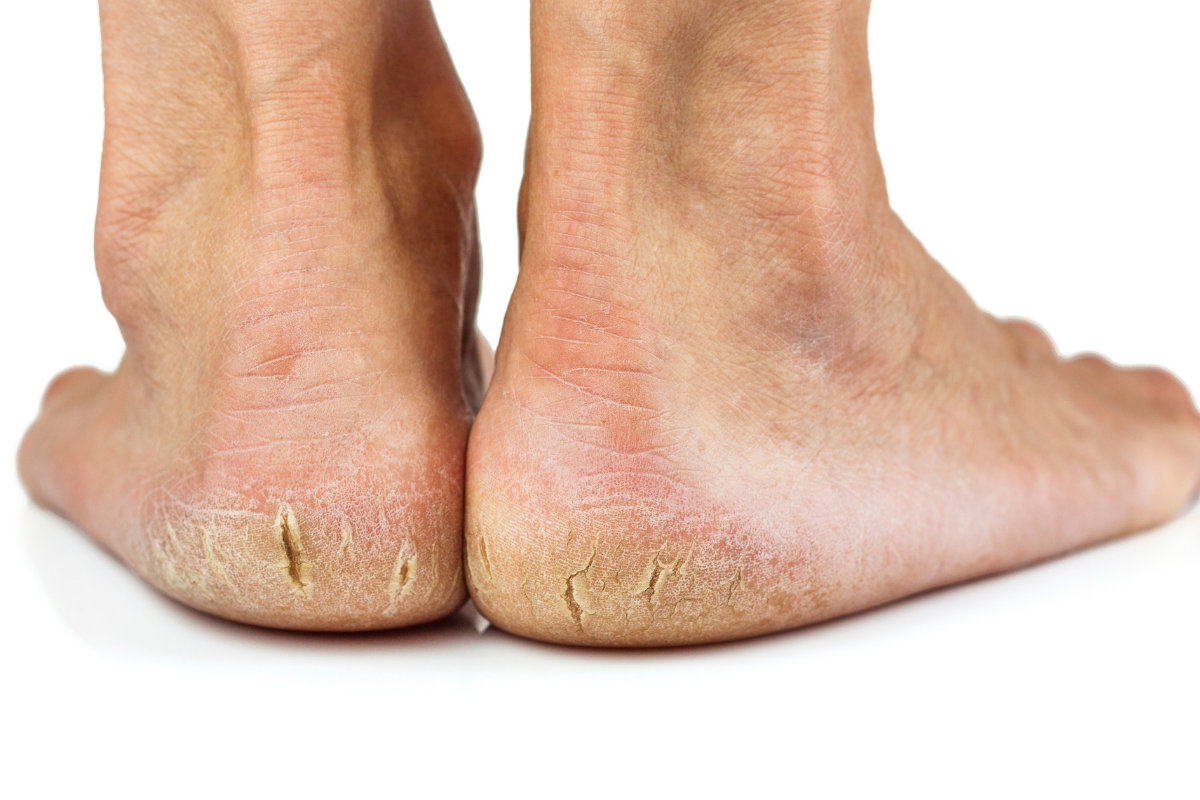What Are They?
Cracked heels occur when there is a fissure or a break in the skin around the edges of the heels where the skin can be dry or thickened. These cracks can be closed or become open which can be unsightly and quite painful when standing or walking.
How Are They Caused?
When we stand, walk or run, our heels in particular take most of the pressure from our bodyweight, which causes the tissue under our heels to spread out and then causes a pulling force on the skin around our heels.
Over time, standing for long periods of time or wearing open back shoes can cause increased pressure and tension on the skin around your heels. Being overweight can also exacerbate this.
If the skin around your heels is dry or thickened it can lose its ability to withstand this high pressure and tension, which causes it to break.
You may be more at risk to dry skin if you suffer from dermatitis, psoriasis, diabetes or hypothyroidism.
If the cracks in your heels are left untreated they can become infected with increased redness and pain.
Follow These Steps To Treat Your Cracked Heels At Home
File the skin around your heels gently with an emery board or pumice stone if it is not too painful to do so.
If your heels are painful, soak them in warm water with salt for 10 minutes (maximum) to clear any bacteria in the cracks of your skin.
Ensure you dry your feet thoroughly with a towel around your heels, as water can dehydrate the skin.
Apply an emollient containing urea, salicylic acid or hydroxy acids to the heels. Avoid between your toes. These emollients can be bought in your local pharmacy and are designed to lock in moisture in your feet and help to soften rough and hardened skin.
If the cracks in your heels are painful, cover them with a plaster or bandage and keep them dry for 2 days. Remove the bandage if it becomes wet and apply a fresh one.
Avoid wearing open back shoes. Wear shoes with a heel counter for better support and protection around your heels.
If you have a medical condition that affects your immune system or have diabetes, you should see your podiatrist first before treating your cracked heels by yourself at home.
What Can A Podiatrist Do For Me?
If you have tried all of the steps described above, you may need professional care and should see a podiatrist.
If the skin around your heels is very hard and thickened, a podiatrist can remove this using a scalpel, which is a highly skilled technique and should only be done by a qualified professional.
Podiatrists can also apply a bandage and provide you with heel cushions to alleviate pressure around your heels.
It is important that you prevent your heels from becoming cracked, especially if you have diabetes which can lead to complications, such as cellulitis. If you are worried about your cracked heels, contact a podiatrist who can provide you with guidance on the best treatment option.


